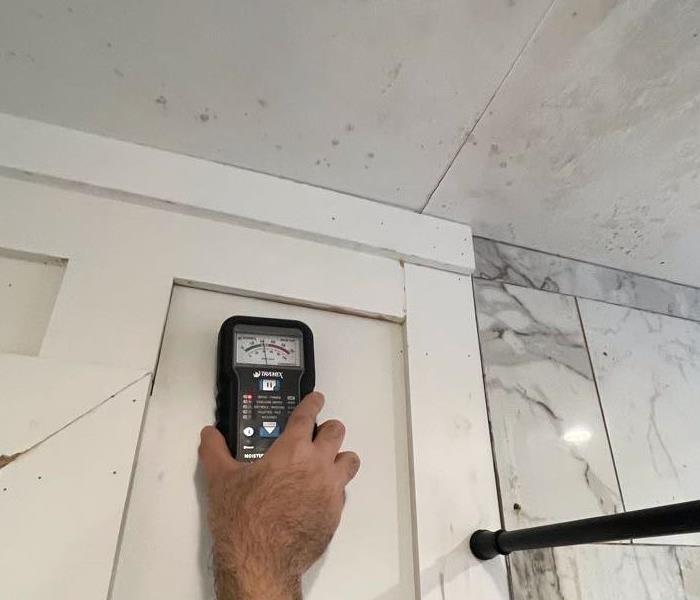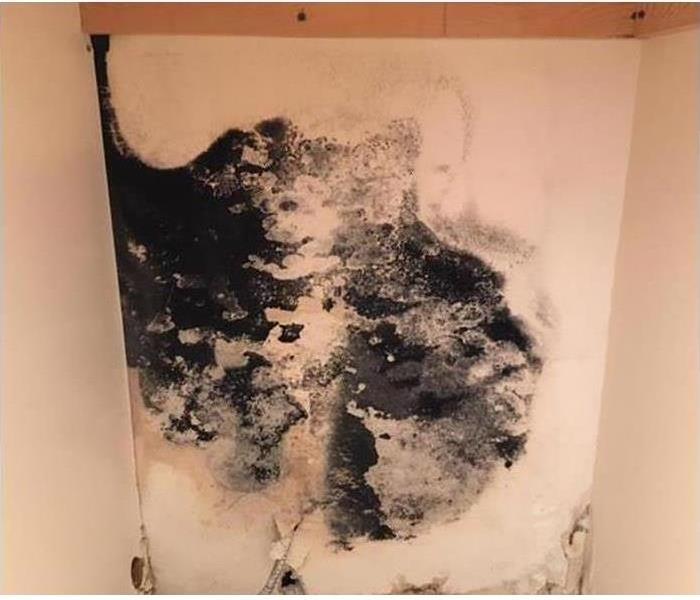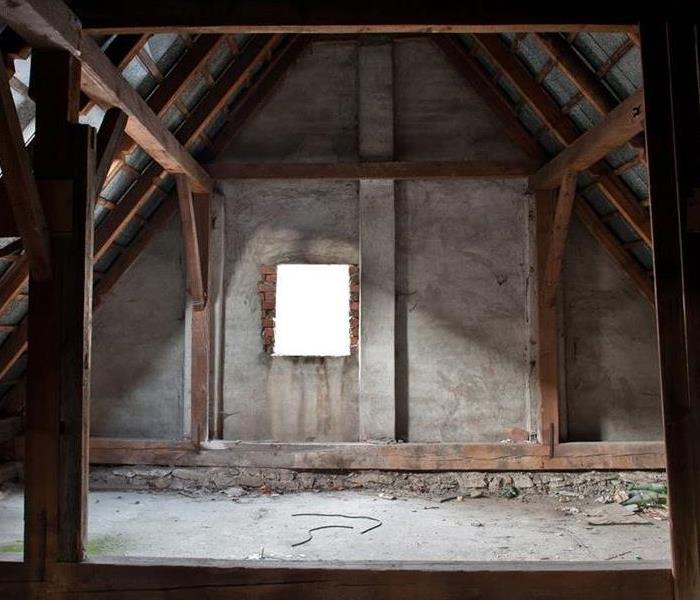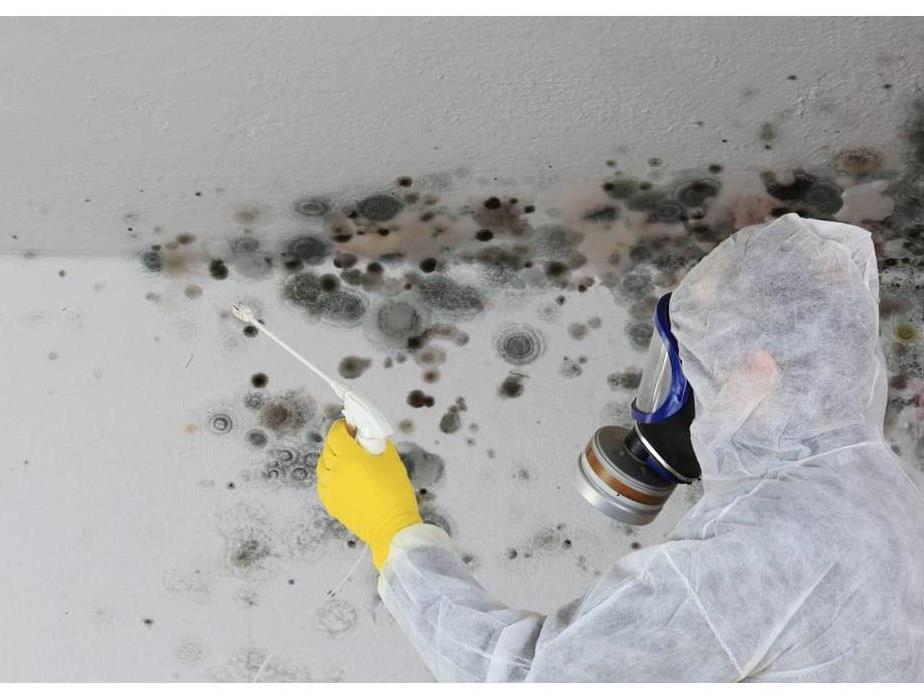Microbial Growth
12/30/2024 (Permalink)
 No more Microbial Growth
No more Microbial Growth
We know that the mold or microbial growth caused by water is very annoying. So we will explain a little more about how microbial growth can be assessed and treated.
What is mold removal?
In simple terms, removing microbial growth is called mold removal. As simple as it sounds, but there is more to it, removing might sometimes indicate mere cleaning without addressing the core problem, that is, identifying the source for the occurrence of mold.
While mold is a natural part of our ecosystem, one cannot eliminate it. Although mold spores are typically inherent in all indoor and outdoor spaces, it is impossible to eradicate all molds, but the key is to control their growth.
Mold spores are generally harmless until they settle on a damp spot and grow into active mold. When you have mold growing in your home, removal becomes imminent. However, a simple mold removal process is never enough to solve these problems in your home unless the infected area is too small.
What is mold remediation?
Mold remediation is the term used to describe all the processes involved in eliminating harmful mold growth. Depending on the type and location, it includes mold testing, removal, demolition, sanitizing, containment, and mold cleaning.
We are professionals, and we are your One Stop Shop to remediate, do not hesitate to call us now.
No more Mold! Here at SERVPRO® of Garden Grove West/Stanton we offer Professional Mold Remediation Services Don't let mold take over your home or business. Our experts are always here to help® Home Mold Remediation Services: Discover mold? We'll eliminate it from your home, ensuring a healthy living environment for you and your family. Our certified technicians will help you from beginning to end! Contact us today, we’re available 24/7 to address your mold concerns and provide reliable solutions.
Environmental Topics – What is Mold?
3/23/2022 (Permalink)
According to the United States Environmental Protection Agency, or the EPA, their website states that, “molds are part of the natural environment, and can be found everywhere, indoors and outdoors. Mold is not usually a problem, unless it begins growing indoors. The best way to control mold growth is to control moisture. (…) Molds can have a big impact on indoor air quality.”
That is why it is imperative to have professional help remediating any potential mold issue you may have. Here at SERVPRO, Garden Grove West Stanton, rest assured, we are properly and professionally trained, with the highest industry standards, and training available nationwide.
Here are a few helpful tips to help eliminate or prevent mold growth:
- For cold surfaces, such as windows, floors, the roof, etc., it is possible to reduce or prevent condensation by installing insulation.
- Any wet or damp building materials, clean and dry within 1-2 days to help prevent mold growth.
- Reduce your indoor air humidity (at approximately 30-60%,) to decrease chances of mold growth.
Steps include:
- Using your exhaust fans when cooking, cleaning or washing dishes.
- Increasing your ventilation.
- Using de-humidifiers and your air conditioner.
- Address the source of the water problem to prevent mold growth.
- Consult your local professional, SERVPRO Garden Grove West Stanton, if the problem persists or you need professional advice for remediation.
Mold - What To Do Until Help Arrives
1/27/2022 (Permalink)
Mold – What to do Until Help Arrives
When there is a water intrusion, like a leaking water line or a roof leak, mold can rapidly become a problem in your business or home in as little as 2 days. Mold can negatively affect a person’s health and can also cause serious property damage. With SERVPRO Garden Grove West Stanton, however, our professionals have the training, skills, and specialized equipment needed to mitigate your mold problem effectively and efficiently, "Like it never even happened."
To Consider:
- A distinct, musty odor can indicate that there may be mold hidden under carpeting or behind drywall.
- People with respiratory problems, children, and the elderly pose a greater risk when exposed to mold.
- Mold growth can happen as quickly as 48-72 hours.
Do’s:
- Turn off your HVAC system and fans.
- Stay away from the affected areas.
- Call your local SERVPRO Garden Grove West Stanton office for proper mold remediation.
Don’ts:
- Do not touch or become in contact with the potential mold.
- Do not use ceiling fans etc, that may blow air across any of the surfaces with potential mold.
- Do not pour bleach or any other disinfectants over the mold surface.
- Do not try to remediate the mold yourself.
And always, your local team here at SERVPRO Garden Grove West Stanton, is here to help! We are only a phone call away, ready to be of service to our community!
Reduce Your Risk of Mold By Repairing Leaky Appliances
4/28/2020 (Permalink)
 Leaky Appliances Can Cause MOLD!
Leaky Appliances Can Cause MOLD!
Leaky appliances in your home can lead to extensive water damage and even mold growth if not taken care of quickly. If the conditions are right, it only takes 24-48 hours for mold to start growing. By keeping an eye on your appliances, you can help catch leaks early and reduce the risk of mold growth.
Follow these tips to help reduce the risk of leaky appliances and pipes in your home and reduce your risk of mold growth.
- Regularly check your washing machine, dishwasher, refrigerator, water heater, sinks and toilets for signs of leaks.
- Routinely check for leaky pipes, appliance hoses and faucets.
- If you see signs of leaks, such as condensation or water collecting anywhere, dry it quickly and find the source of the leak and fix it.
- Fix plumbing problems immediately.
- Monitor your utility bills each month. An unusually high water bill can be a sign of an unseen leak.
By keeping an eye out for leaks from appliances and other water sources in your home, you can catch leaks early and reduce the risk of water damage and mold growth. If you do encounter mold growth or other water damage, give us a call at (714) 660-0701. SERVPRO of Garden Grove can make it “Like it never even happened.”
Mold 101: The Effects on Human Health
4/25/2019 (Permalink)
 Mold Inside Attic Home
Mold Inside Attic Home
Mold is a non-scientific term for many types of fungi - unwanted, unappealing patches of black, brown, yellow, pink, green, smelly, fuzzy growths. Countless species of mold are found both indoors and outdoors.
"Mold" and "fungus" have many connotations, most of them unpleasant: musty odors, damp basements, moldy carpets, water leaks, soggy drywall, athlete's foot, and poisonous mushrooms, among others. On the positive side, molds are also responsible for penicillin and blue cheese; yeasts are fungi (plural of fungus) used to make bread, beer, and wine; and some types of mushrooms are considered edible delicacies. And without fungi to break them down, the world would be buried in leaves, trees, grass, and garbage.
Although mold and its spores are literally everywhere, active mold growth requires moisture. Whether on visible surfaces or hiding behind drywall, in attics, or under carpets, indoor mold grows in the presence of excessive dampness or water. Also found in damp indoor environments are:
- bacteria;
- dust mites;
- break-down products of bacteria and molds, such as proteins, cell-wall particles (glucans) and volatile organic compounds (the actual cause of the musty odor associated with mold);
- airborne chemicals, gasses, and particulate matter caused by destruction of materials by growing molds.
Indoor mold may be unsightly and smelly, but the potential problems are more serious than that. By definition, actively-growing mold damages the material it lives on, thereby impairing structural integrity. In addition, mold is associated with some untoward health effects in humans, including allergies and infections. (Some health effects attributed to mold may in fact be caused by bacteria, dust mites, etc., found in mold-colonized environments. So-called "toxic mold" has been claimed as the cause of "toxic mold disease"; this syndrome remains undefined and "toxic mold" as a cause remains unproven. "Toxic mold" is also unproven as a cause of the various symptoms associated with "sick building syndrome".1,2)
Mold growth in homes, schools, and businesses should be eliminated for the sake of human health, structural integrity, and quality of life. Cleaning up small amounts of mold can be done by homeowners. Eliminating mold from large areas requires expertise and protection both for the removal specialists and occupants of the affected space.
Fungus and mold
Fungi comprise a vast world of organisms, perhaps as many as 300,000 species. The U.S. Environmental Protection Agency defines funguses, or fungi, as "types of plants that have no leaves, flowers or roots." Fungi include such seemingly unrelated substances as poisonous and non-poisonous mushrooms; organisms that can cause athlete’s foot, fingernail infections, and some types of pneumonia; molds found in cheese, peanut butter, mulch, hay, grains, and spoiled foods; and the black material growing in bathroom grout.
Fungi reproduce by means of spores which are spread through the air but land and survive on surfaces. Many spores can remain dormant for long periods under dry conditions, but typically develop into fungi in the presence of moisture.
Outdoors, fungi break down organic matter, including leaves, grass clippings, and dead trees. The fungi themselves constitute a large mass of material with many types of spores. These spores vary with the material on which they are found, the season, and the weather. At any given time, the same types of spores are found indoors because they enter through doors and windows and on clothing and shoes.
Molds are fungi. Homes and structures often provide many opportunities for mold spores to grow, even in the absence of frank water leaks: seepage through foundation walls and cellar floors, dehumidifiers and air conditioners, window condensation, defective plumbing, damp bathrooms, air filters, and potted plants. Different types of mold spores thrive on different surfaces; for example, the "yellow slime" found on hardwood mulch won’t be found growing in a tiled bath enclosure.
Common indoor mold species include Aspergillus, Alternaria, Acremonium, Cladosporum, Dreschslera, Epicoccum, Penicillium, Stachybotrys, and Trichoderma. Specific types of molds can be tested for and identified. This allows comparison of indoor and outdoor mold species at a given location and time. If the two don't correlate, at least roughly, it is possible that indoor mold colonies have developed. Even if they're not in a visible location, such molds can release spores and other material into the indoor air.
The presence of molds or mold metabolites does not necessarily correlate with human illness, though. Tests identify the presence of these substances at a moment in time, and not necessarily the time frame in which individuals are exposed and illness develops. Also, the presence of these substances does not necessarily mean exposure: the fact that they are present doesn't necessarily mean they were inhaled.
Note that identification of specific mold spores is not necessary when cleaning up indoor mold colonies. It may or may not be useful when treating health effects of mold exposure, depending on the circumstances. In any case, the role of testing for indoor mold is undefined, because as yet there are no standards for interpreting these tests.
Health effects associated with exposure to indoor damp spaces and mold
Molds and other fungi grow easily in damp indoor environments. People who spend time in such environments sometimes complain of respiratory effects, headaches, and other physical symptoms. In addition to visible or hidden mold, damp spaces likely harbor mold break-down products, dust mites, bacteria, and chemicals, gasses, and particulate matter released from the materials on which molds are growing. Given the difficulties in testing for all of these elements, hard evidence of precise cause-and-effect can be elusive.
In an extensive 2004 report, the Institute of Medicine (IOM) did not find enough evidence to identify health effects which were definitely caused by spending time in damp indoor spaces. However, the experts found that being in damp indoor spaces seemed related to respiratory illnesses: nose and throat [upper respiratory] symptoms, cough, wheeze, and asthma symptoms. They also found limited evidence that these environments can be associated with shortness of breath, the development of asthma in people who did not previously suffer from it, and lower respiratory symptoms (coughing, wheezing, chest tightness, and shortness of breath) in healthy children. Based on available research, IOM was not able to substantiate claims of numerous other symptoms such as skin irritations, fatigue, cancer, lung disease, or respiratory infections. There was enough evidence of health effects overall, though, that IOM identified damp indoor spaces as a public health problem that needs to be addressed.
Publications in 2007, 2010, and 2011 did not substantially change those findings. They reiterate that there is evidence to support an association between damp spaces, indoor mold, and respiratory illnesses. Therefore, whether the precise cause is mold or an accompanying indoor contaminant, spending time in places damp enough to support the growth of mold is a potential cause of ill health. Whether or not mold is actually seen, finding and fixing the sources of excess moisture are important for health and to keep the structure from being further damaged. Researchers note that, if dampness and mold could be confirmed as a cause of ill health, controlling these conditions would make a substantial contribution to public health.






 24/7 Emergency Service
24/7 Emergency Service



